Suppressed
Histories
Archives
Home
Excerpts from the Patriarchies slide presentation:
"If
a man carry off a maiden by force, let him pay 50 shillings to the owner,
and afterwards buy his will of the owner [male guardian]."--82nd
law of
king Aethelbert of England.
Simply
by paying a fine and bridal fee, a rapist could legally force a woman
into marriage. This happened when families had cause to fear that no man
would marry a daughter who had suffered a rape.
•
"And
whosoever lieth carnally with a woman that is a bondmaid... she shall
be scourged, they shall not be put to death, because she was not free."
--Leviticus 19:20
But the man was not scourged; he simply paid a ram to the temple.
•
In 1293 the papal bull Periculoso ("Dangerous") decreed that all nuns "shall henceforth remain perpetually enclosed." For no reason, such as their charitable work in hospitals and communities, were they to "have the power of going out of those monasteries."
•
"It
is a crime against humanity that our women are shut up within the four
walls of the houses as prisoners. There is no sanction anywhere for the
deplorable conditions in which our women have to live."
--- Muhammed Ali Jinnah, first prime minister of Pakistan, in 1944
•
Runaways were so common in early modern China that the homiletic Gong-Guo-Go offered an astronomical 300 merits for "leading back to her home a woman or girl who has escaped."
•
Bound feet
was an affliction that women of European tradition also suffered, like
upper class
women in Lima, Peru, circa 1750:
"From
their infancy they are accustomed to wear straight shoes, that their feet
may not grow beyond the size which they esteem beautiful; some of them
do not exceed five inches and a half, or six inches in length... the shoes
are made in such a manner that they never loosen of themselves... [and
are] very little calculated for service." (But
they had diamond buckles.)
--Juan Jorge and Antonio de Ulloa, A Voyage to South America
This January marks the 35th year of the Suppressed Histories
Archives, an independent research project that educates people about global
women's history. This encompasses a broad range of subjects, including
not only women of power, mother-right traditions, shamanic arts, and Goddess
veneration, but also indigenous studies and the dynamics of patriarchy,
conquest, slavery and empire.
The collection now contains well over 14,000 slides, as well as photocopied
texts, images, maps and books. Nearly a hundred slide presentations have
grown out of the Archives. A third of the titles look at issues of women's
power, oppression, and heritages from an international perspective, and
the rest go chronologically, by country or region. (You can access the
catalog here.)
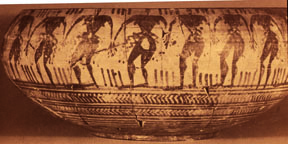 For three decades and counting, the Suppressed Histories Series has brought
internationalist women's studies to all kinds of audiences, from feminist
bookstores and community centers to universities, public schools, libraries,
museums, prisons, galleries, festivals, and conferences.
For three decades and counting, the Suppressed Histories Series has brought
internationalist women's studies to all kinds of audiences, from feminist
bookstores and community centers to universities, public schools, libraries,
museums, prisons, galleries, festivals, and conferences.
Max Dashu on the foundation of the Suppressed
Histories Archives:
In January 1970 I entered on the path of an independent scholar, with
the aims of recovering the obliterated history of women and understanding
how patriarchy and other systems of domination came into being. Several
things soon became clear. Neolithic iconography overwhelmingly emphasized
women, in a qualitatively different way than modern media. Women in indigenous
societies usually held greater power than in feudal and colonial systems,
and all matrilineages that survive today are indigenous societies.
I found that domination of women correlated with domination by class,
ethnicity, and other socio-political hierarchies. In other words, the
upper classes have historically been more invested in patrilineage, multiple
wives, and constraining women's bodies and behavior than commoners and
indigenous peoples. That is why the Romans called the ruling classes patricians;
why veiling began with the Indo-European elite, and footbinding with Chinese
aristocrats, long before they spread to other classes.
My research also showed that public female spheres of power tended to
concentrate in the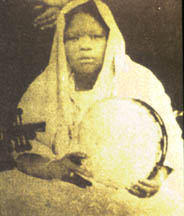 area of spiritual leadership and, conversely, that banning the priestess
was a keystone to deepening the cultural colonization of women through
religion. A more profound level of domination was possible than could
be achieved through violence and coercion, if women could be induced to
believe that their oppression was divinely ordained and to subscribe to
an idolatry of the masculine. Witch persecutions have been another method
of attack against female power, solidarity, protest and resistance. In
much the same way, colonizers hoping to break the spirit of the country
they were invading persecuted the medicine people and prophets. I found
that women shamans, diviners, and medicine women have often been at the
forefront of liberation movements. See "Priestesses
and Political Power."
area of spiritual leadership and, conversely, that banning the priestess
was a keystone to deepening the cultural colonization of women through
religion. A more profound level of domination was possible than could
be achieved through violence and coercion, if women could be induced to
believe that their oppression was divinely ordained and to subscribe to
an idolatry of the masculine. Witch persecutions have been another method
of attack against female power, solidarity, protest and resistance. In
much the same way, colonizers hoping to break the spirit of the country
they were invading persecuted the medicine people and prophets. I found
that women shamans, diviners, and medicine women have often been at the
forefront of liberation movements. See "Priestesses
and Political Power."
Global Women's History, Freelance
I am a grassroots historian and educator. I began with slideshows in women's
bookstores (which still happen) and branched out to community centers,
women's festivals, schools, libraries, prisons, galleries and conferences.
Since 1980, I've given slide talks at universities around the U.S., including
the Women's Centers at Northwestern, University of California-Berkeley,
Princeton, and M.I.T. I've done a couple shows in Canada, a series in
San Miguel de Allende, Mexico, and presented at a symposium at Rila, Bulgaria.
In 2005 I gave the keynote address for a conference convened by the New
Jersey Coalition for Battered Women and presented at the Shamanism Conference
(San Rafael CA), a multicultural sorority at Stanford, the Daughters of
Diana Gathering (Wisconsin Dells) and the Second Congress of Matriarchal
Studies (San Marcos TX), among many others.
New Visual Presentations
Several new slideshows have come into being in the past two years, on
very important subjects. The newest is Icons of the Matrix,
about sacred signs that recur globally in ancient cultures: "female
figurines," ancestral megaliths, vulva stones, and ceremonial pots
in the form of women and breasts. This art opens a window into pre-patriarchal
spiritual values and the deep cultural continuities that can be seen around
the world, from the oldest archaeological record up to more recent indigenous
societies.
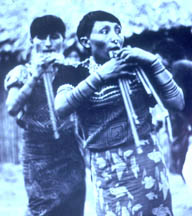 Mother-Right
and Gender Justice is an international look at egalitarian
matrilineal/matrilocal societies. Information on these matrix cultures
is scattered and buried (it took three decades to put together this slideshow)
yet they offer living examples of how people can live with harmony and
mutual respect. Women's decisions carry real weight in these societies.
Their existence proves that patriarchal domination is not "natural"
and inevitable, and also shows that the peoples that standard histories
skip over, in places like Sumatra and Yunnan and Niger and Colombia, have
developed the most advanced social systems, which respect the personal
freedom of all members while fostering the common good.
Mother-Right
and Gender Justice is an international look at egalitarian
matrilineal/matrilocal societies. Information on these matrix cultures
is scattered and buried (it took three decades to put together this slideshow)
yet they offer living examples of how people can live with harmony and
mutual respect. Women's decisions carry real weight in these societies.
Their existence proves that patriarchal domination is not "natural"
and inevitable, and also shows that the peoples that standard histories
skip over, in places like Sumatra and Yunnan and Niger and Colombia, have
developed the most advanced social systems, which respect the personal
freedom of all members while fostering the common good.
Another new group of presentations began with an international, trans-historical
overview of Patriarchies. I had been teaching
about this all along, but it is difficult to find images to illustrate
the pervasive injustices that happen behind closed doors, and which society
papers over with denial. I really felt the need for an overview that looked
at the common structures and behaviors, because most people don't grasp
the enormity and scope of patriarchy, historically or in the present.
Finally I said, "This is too important: just work with what you've
got," and threw all the slides I had been saving on the light table.
Even with all the gaps, there were hundreds of them. I pulled more slides
from the regional shows and made duplicates to fill in missing geographic
areas and subjects like "honor-killings" and the all-male judiciary.
The presentation that emerged is visceral and haunting, but essential
knowledge for anyone who cares about changing injustice.
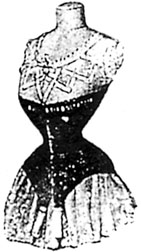
From the fission of this collection came two more presentations on how
patriarchy affects women. Male-Dominated Religion
will take some time to develop fully. Taming the Female Body
includes illustrate the massive surgical interventions pressed on "Western"
women: unnecessary hysterectomies, Caesarians, silicon implants, and plastic
surgeries (from faces to vulvas to liposuction, stomach-stapling and intestinal
bypass, the latter series motivated by the hateful treatment of fat women.)
Another another show in development, Global Women's Movements, looks at the explosion of liberatory actions, alliances, and ideas around the world in the past three decades.
The most-requested slideshows to date include:
Women's Power; Female Rebels and Mavericks;
Woman Shaman;
Goddess Cosmologies; Witches and Pagans; The Canaanite and Hebrew Goddess;
Ancient China; Mother-Right and Gender Justice; and
Racism, History and Lies.
On the Net
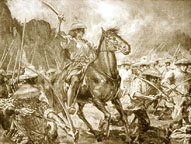 Response to the Suppressed Histories web site, now in its fifth year,
has been tremendous. In Feb. 2005 it got 63,795 hits, and the server stats
show them coming from all over the world. It is a real charge to see that
people in Thailand and Saudi Arabia and Zimbabwe and Honduras and Malaysia
are logging on. Email queries come in from researchers in Mexico and professors
in Scotland, from feminists, pagans, anti-racist activists, and other
allies. A website in Trinidad has sent on many visitors by posting a link
to my article on "Racism,
History and Lies."
Response to the Suppressed Histories web site, now in its fifth year,
has been tremendous. In Feb. 2005 it got 63,795 hits, and the server stats
show them coming from all over the world. It is a real charge to see that
people in Thailand and Saudi Arabia and Zimbabwe and Honduras and Malaysia
are logging on. Email queries come in from researchers in Mexico and professors
in Scotland, from feminists, pagans, anti-racist activists, and other
allies. A website in Trinidad has sent on many visitors by posting a link
to my article on "Racism,
History and Lies."
The new edition of the Suppressed Histories website is online and will
be expanding every month. So far only the tip of the iceberg is up, but
more content will be uploaded soon, including tastes of selected slide
presentations and book excerpts. Interviews, book reviews, and bibliographies
will be added in the future. The new articles and book excerpts include:
Icons of the Matrix
Herbs, Knots, and Contraception
Expanded versions of chapters on Roman patria potestas, the Women's
Mysteries of Bona Dea, and the first mass hunt recorded in history are
linked on the Articles page.
And some excerpts from the Women's Power show
are linked at the end of the introductory article here.
More will be added in the coming months.
New Publications
"Knocking Down Straw Dolls" was published in the January 2005
issue of Feminist Theology (Sheffield Academic Press, Britain).
Goddessing Regenerated features an interview that Willow LaMonte
did with me in 2000 (well, these things take time).
"Icons of the Matrix" will appear in the forthcoming anthology Female Mysteries of the Substratum, edited by Joan Marler and Miriam Robbins Dexter, based on presentations at the 2004 conference in Rila, Bulgaria.
History, Politics and Religion
This year [2005] feels like a turning point because of the American elections,
which affected everyone on the planet, not just citizens of the empire.
Even with the voter suppression and machine count fraud, it's clear that
a sizable number of women voters passed on feminism, civil rights, labor,
health, and the environment, because of security fears, nationalism, and
traditional religious doctrine. (White women especially went this way,
and married women.) I think that the press over-hyped the "morality"
exit polls (how many people answered yes to that because they believe
it is immoral to wage a Shock and Awe war on civilian populations?). Exit
polls didn't count when they said that Kerry had won, but the much smaller
number who cited "morality" have been greeted by a cascade of
stories angled toward traditional religion. Corporate media is a serious
problem, but clearly old-time religion is going to have a bigger impact
than it has for a century. The separation of church and state is under
serious threat and is already in the process of being breached.
For this reason, it is important for us to address the historical roots
of fundamentalism, what I call the prehistory of the religious right.
Probing the political underpinnings of religion in "Western Civilization"
has been a large part of my work for three decades: the history of state
Christianity with its gender and race ideologies, its demonization of
cultural Others, whether they are women/witches, pagans, Jews, Muslims,
Africans, Romany or American Indians. The cultural script of the Crusades
still haunts the world, and is threatening an even greater global conflict.
(For more on this, see article.)
The Racism, History and Lies presentation discusses
these dynamics, but the times demand special attention to Christian relations
with Muslims and Jews, including the Crusades, pogroms and the blood libel
(accusations of ritual murder levelled against Jews), as well as the modern
era of colonialism and genocide. It is imperative for people to be educated
about what underlies the modern scripts for religious war.
The Secret History of the Witches
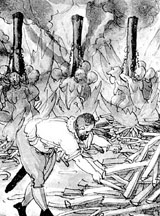 My
forthcoming book deals with these issues, drawing links between Christian
state repression of women, pagans, Jews, and indigenous peoples. Both
witches and Jews were accused of poisoning and baby-killing and blamed
for all social ills. The accusation of devil-worship that was first leveled
at European pagans and witches was later used to attack American Indian
and other indigenous religions, including those of enslaved Africans.
Witch hunters persecuted European women, attacking their speech, freedom
of movement, and professions, subjecting them to torture-trials in which
they were literally and figuratively raped. The diabolist ideology that
governed all "confessions" extracted in this way degraded women's
status, sexualized torture, and also drove a demonized image of Africans
deep into European consciousness. These obsessions led Euro-Americans
to wreak havoc on African Americans. Meanwhile, modern culture remains
deeply stained by the behavioral legacies of woman-hating. These poisoned
wells must be cleansed so that cultural healing and social transformation
can happen.
My
forthcoming book deals with these issues, drawing links between Christian
state repression of women, pagans, Jews, and indigenous peoples. Both
witches and Jews were accused of poisoning and baby-killing and blamed
for all social ills. The accusation of devil-worship that was first leveled
at European pagans and witches was later used to attack American Indian
and other indigenous religions, including those of enslaved Africans.
Witch hunters persecuted European women, attacking their speech, freedom
of movement, and professions, subjecting them to torture-trials in which
they were literally and figuratively raped. The diabolist ideology that
governed all "confessions" extracted in this way degraded women's
status, sexualized torture, and also drove a demonized image of Africans
deep into European consciousness. These obsessions led Euro-Americans
to wreak havoc on African Americans. Meanwhile, modern culture remains
deeply stained by the behavioral legacies of woman-hating. These poisoned
wells must be cleansed so that cultural healing and social transformation
can happen.
I am completing the first volume of The Secret History, on ancient
European religion, its goddesses, oracles and priestesses; the status
of women in the Basque, Celtic, Germanic, Italic, Baltic and Slavic cultures;
the origins of Christianity and how the alliance of the institutional
Church and feudal states impacted women, pagans, and Jews. The book is
an attempt to reconstruct the riches of pagan folk tradition in the early
middle ages. Historians' prejudices against pagan Europe have been longstanding,
yet recent attempts to rectify that bias are all too often inaccurate.
My aim is to bring together the key sources, many of them not available
in English, or known only to academic specialists. You can read the book
outline here.
What's next?
It has been difficult to bridge the gaps (and sometimes chasms) between
grassroots and scholarly, spiritual and political. Some of these divisions
are starting to break down. But most of academia still looks down its
nose at the idea that egalitarian societies ever existed, or that goddess
veneration does have socio-political implications (however complex). Even
many Women's Studies scholars are wary of these heretical and stigmatized
areas of study. Neolithic history has not been a subject covered in those
syllabi, with exceptions. But I think this can change, as women inside
and outside academia overturn the old doctrinal barriers. Ancient history
is very relevant! especially given where the world is headed politically
and ecologically.
My top priority now is to publish The Secret History of the Witches.
I hope to have the first volume out by the end of the year, but funds
are needed to make that happen. Second editions are planned for the out-of-print
essays Streams of Wisdom and Knocking Down Straw Dolls.
An expanded version of Icons of the Matrix is also on the drawing
board.
Wherever I can, I will continue teaching women's history and spiritual
traditions in a global context, exposing people to images they aren't
likely to have seen before, and stimulating discussion about where women
stand now and how we got there. It is crucial for us to undo the cultural
spells about who women are, that have seduced so many into settling for
false, subordinated identities peddled by the consumerist spectacle. Denial
is a luxury none of us can afford. The times demand courage, truth-telling
and vision, as we reaffirm the animist vision of all beings as sparks
of the Divine.
How You Can Support the Suppressed Histories Archives
Your contributions are needed to get this work work out there. Earnings
from presentations do not pay for basic expenses like website fees, slide
trays, or duplication for new shows, much less computer support. (For
lack of which, a big chunk of work, and some of the mailing list, was
lost in November 2004.) Please believe that even small donations help.
But larger donations are very much needed. This is your opportunity to
vote for the preservation of this body of knowledge, and its signature
fusion of spiritual and political, feminism and anti-racism, by making
donations. All contibutions are received with thanks.
If you aren't able to contribute money, you can help in other ways. One
is to facilitate bookings for the Suppressed Histories Series, so it will
be seen by people in more places. Interested contacts are needed in institutions
who might sponsor showings: teachers, women's clubs, youth groups, temples,
churches, or wherever. (I will do free shows for at-risk youth, prisoners,
and survivors of battering or trafficking, but must be paid for the others.)
Or you can hold a fundraising event.
Most Pressing Needs for the Suppressed Histories Archives:
Computer support (Mac).
Slide trays, film, developing, mounts, [all defunct now!] toner, archival supplies
Funding to finish and publish The Secret History of the Witches
Funding to catalog the slide collection in a searchable database
Slide duplication budget for shows aimed at youth and other new presentations
Special thanks for much-appreciated support over the past year
goes out to Sarah E.J. Cohen of Change Makers for Women; Jodi MacMillan,
Andrew and Laura of Belladonna; Cha Smith of Kahea (Hawaiian Environmental
Alliance); and Joan Marler of the Institute of Archaeomythology. Also,
thanks to Bear Kaufmann. Most of all, thanks to Nava Mizrahhi, the rock
and mainstay of the Archives.